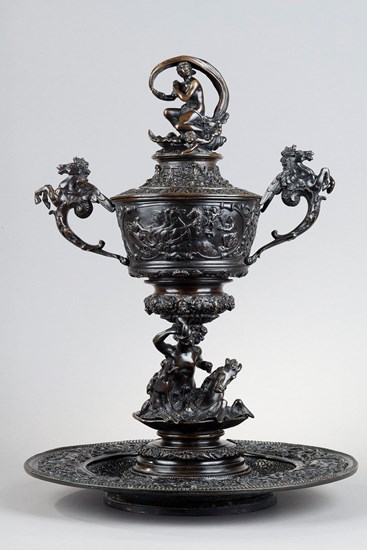Renaissance bronze bowl by Antonio Pandiani Milano

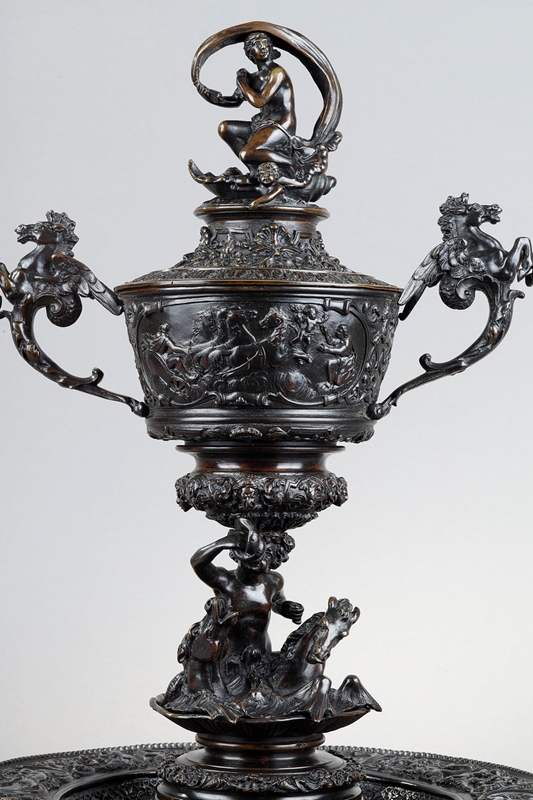
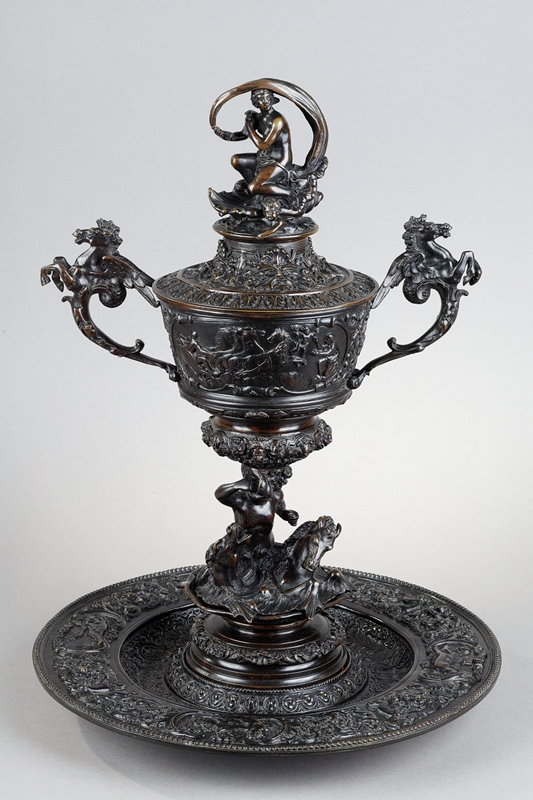

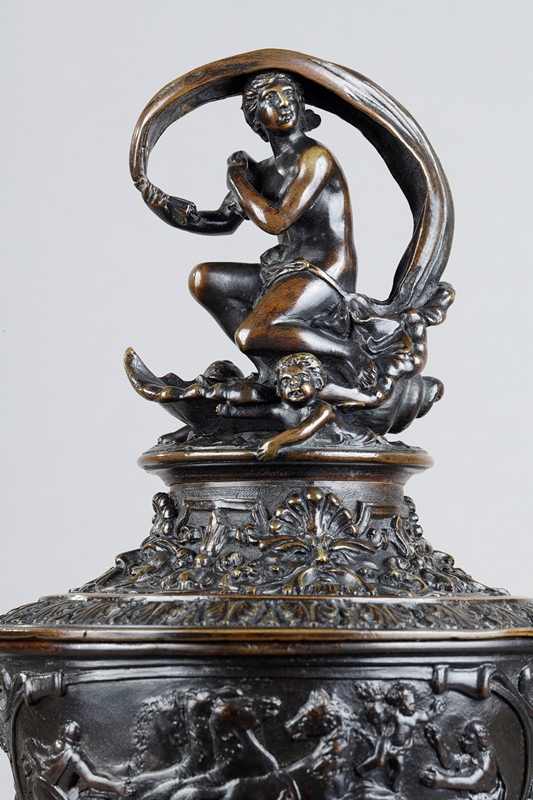
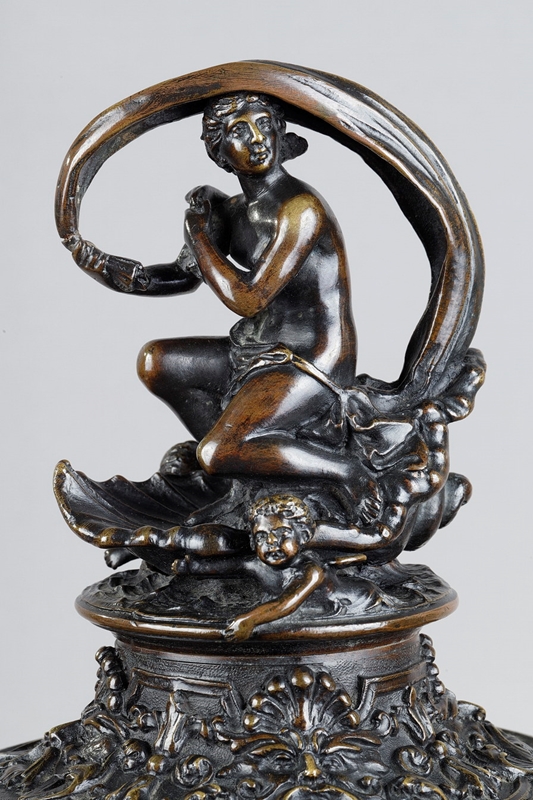
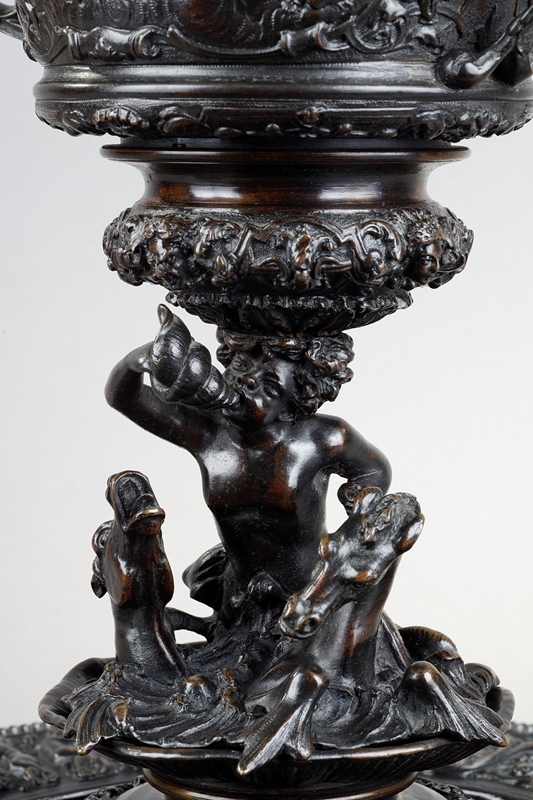

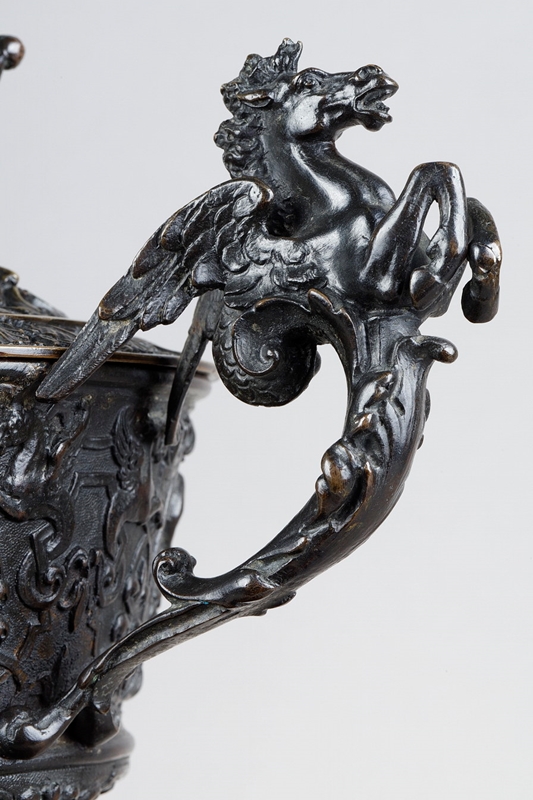

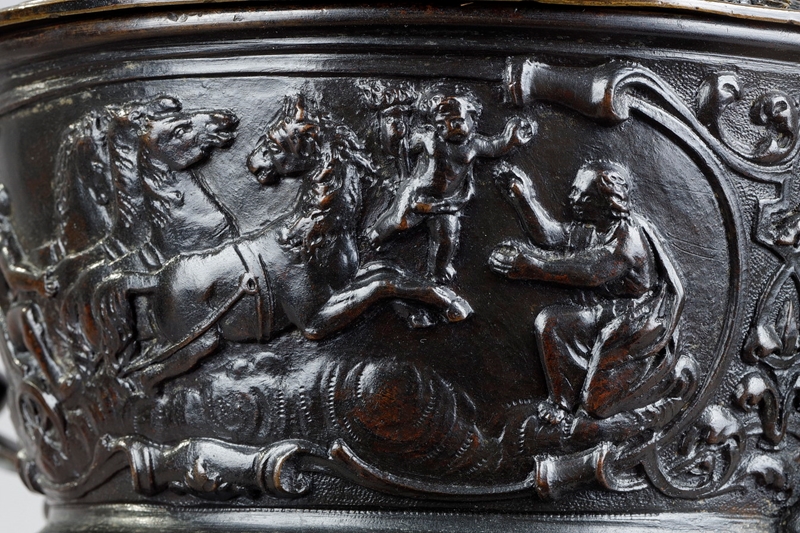

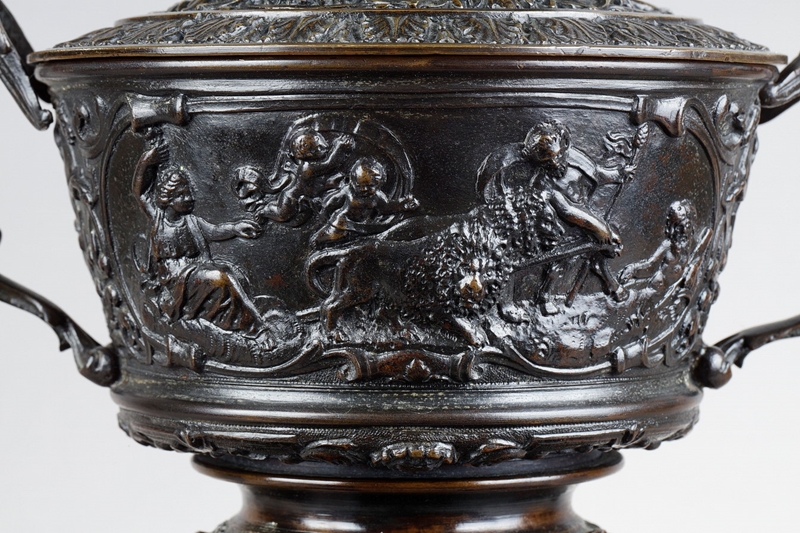
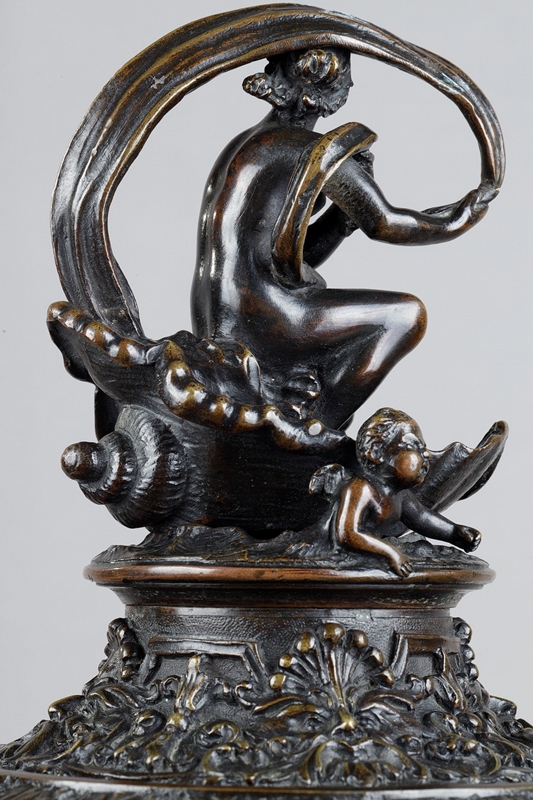
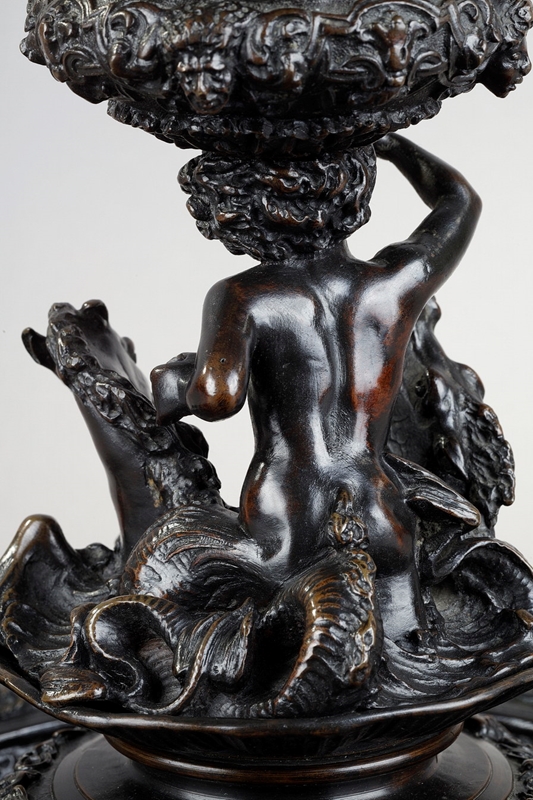
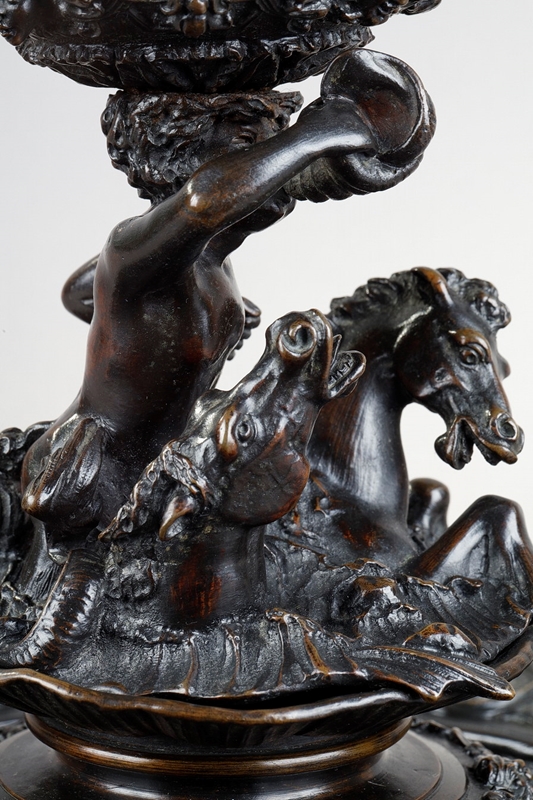
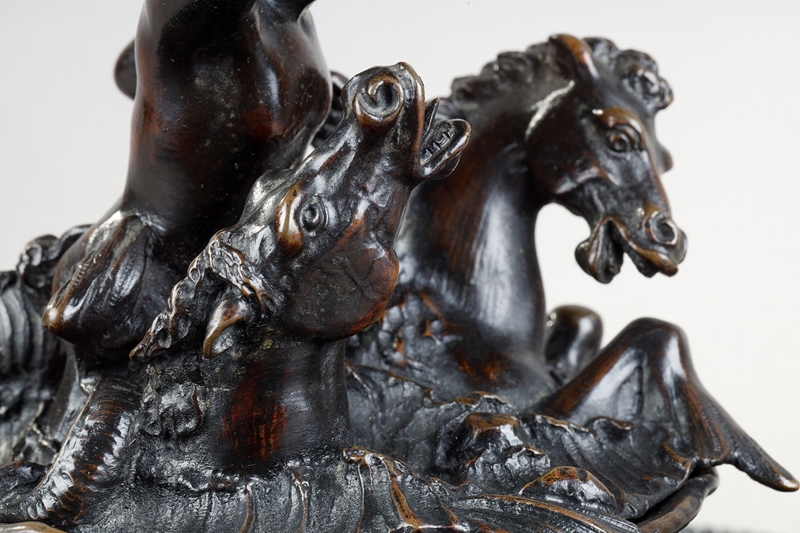
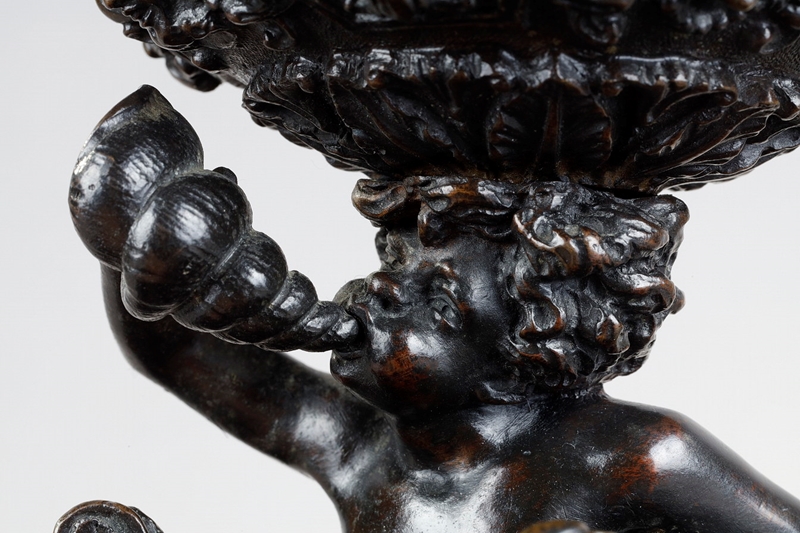
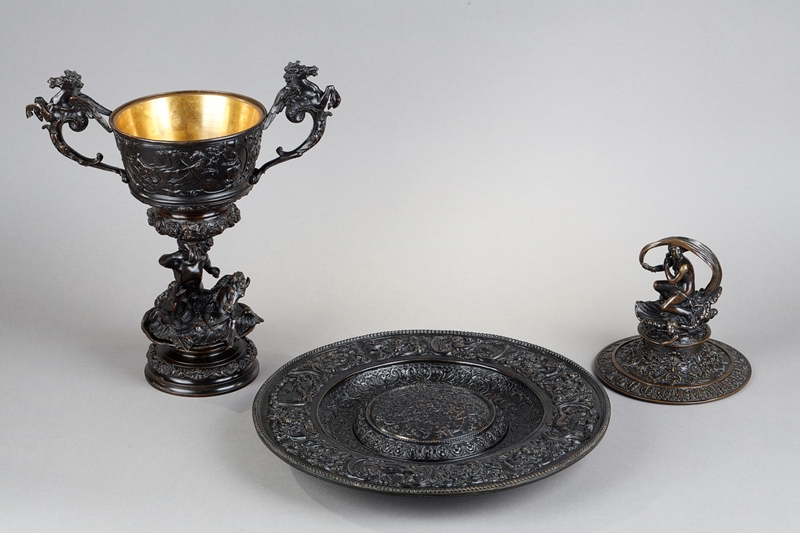
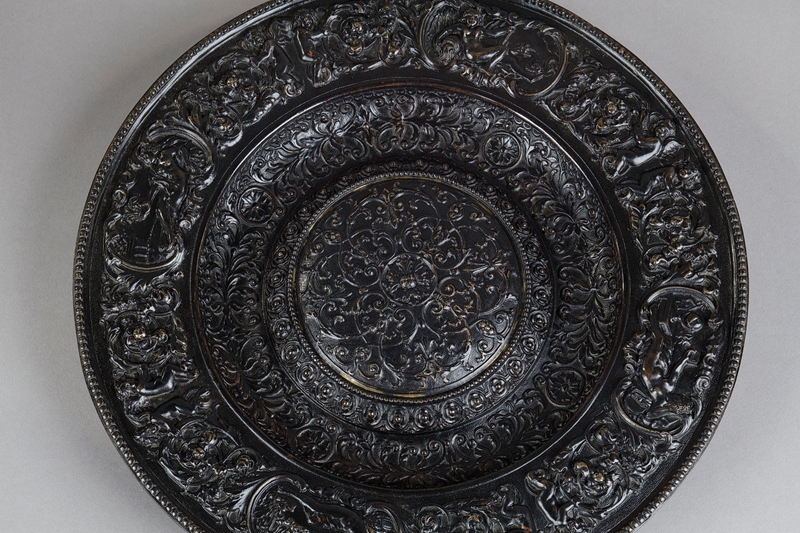
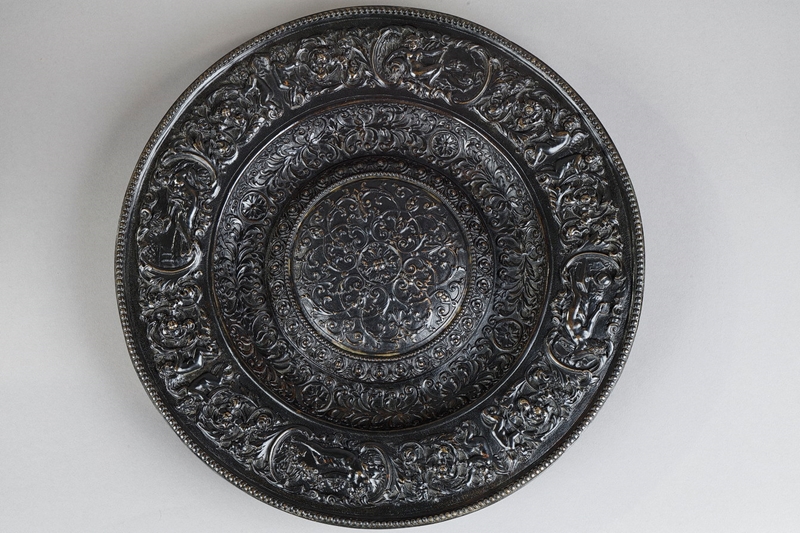
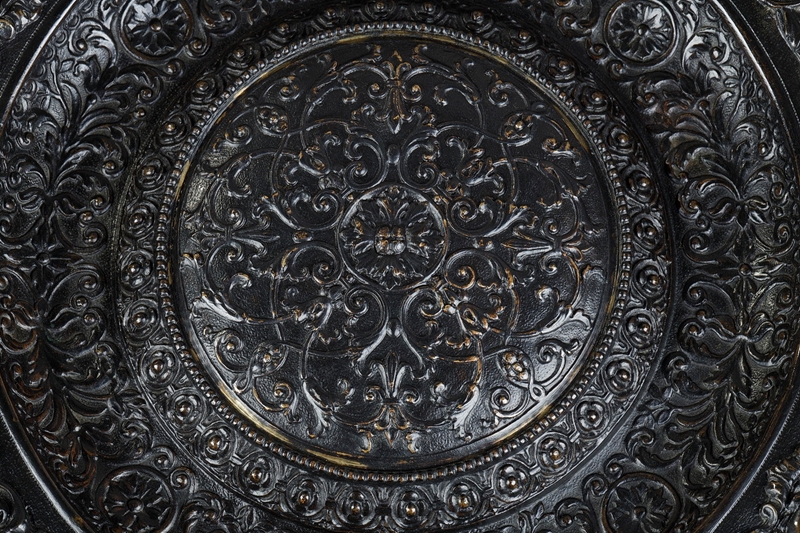
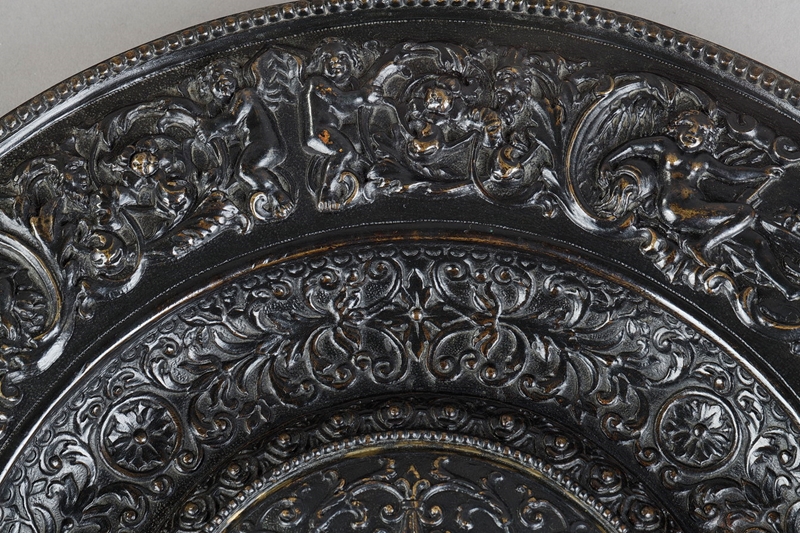
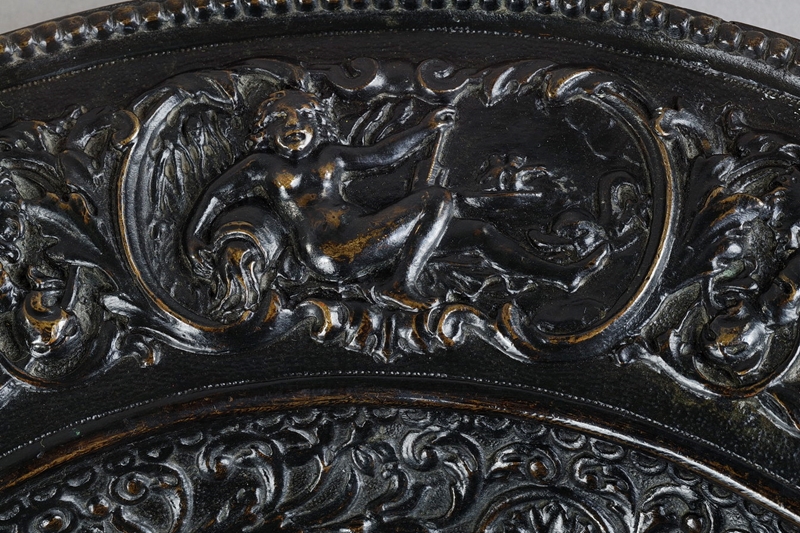
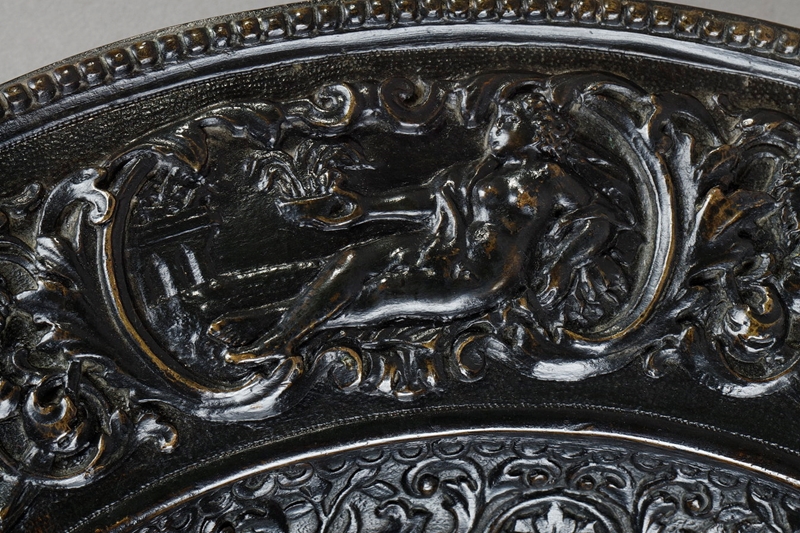
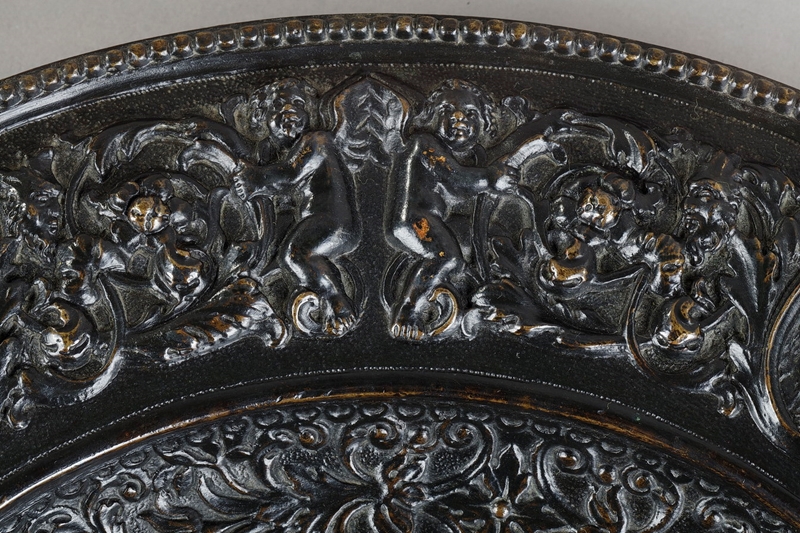
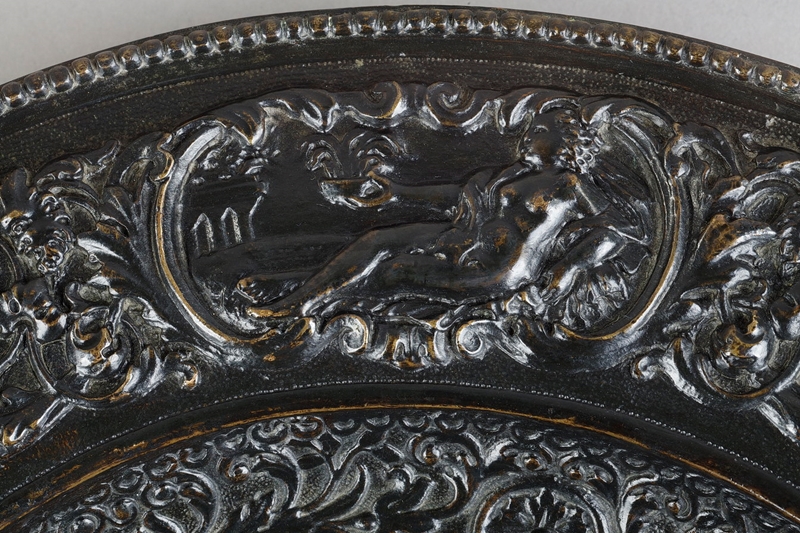

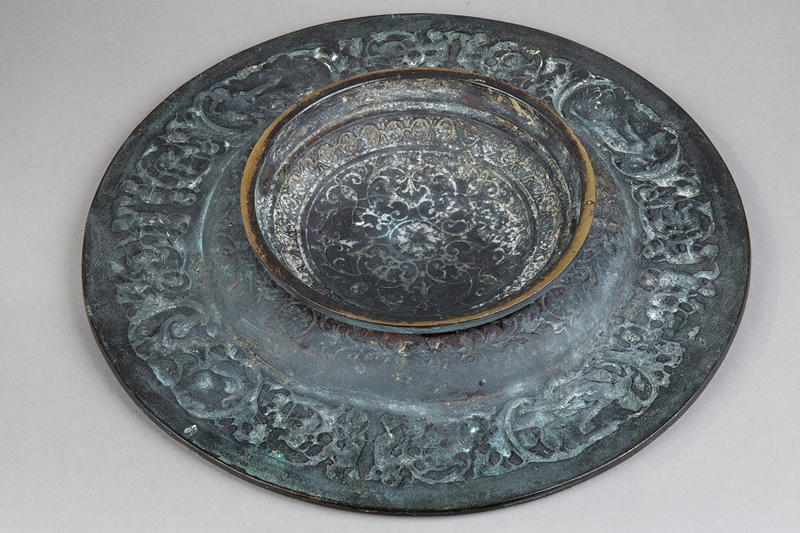

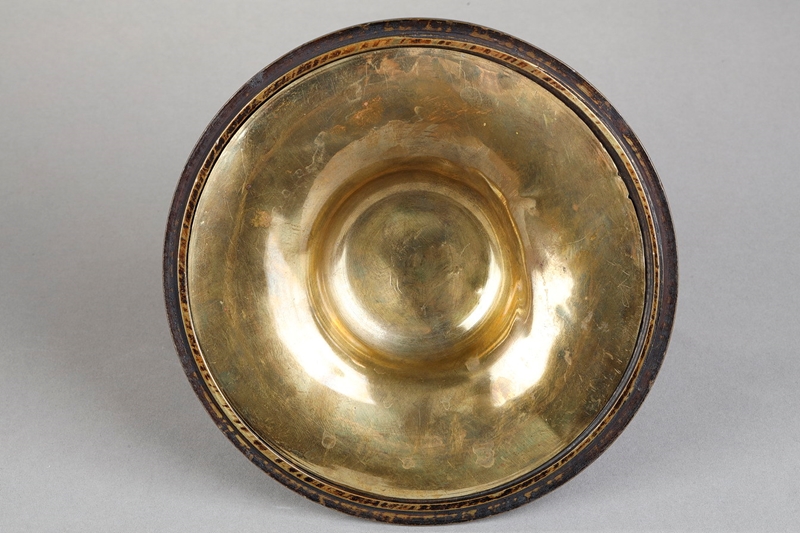

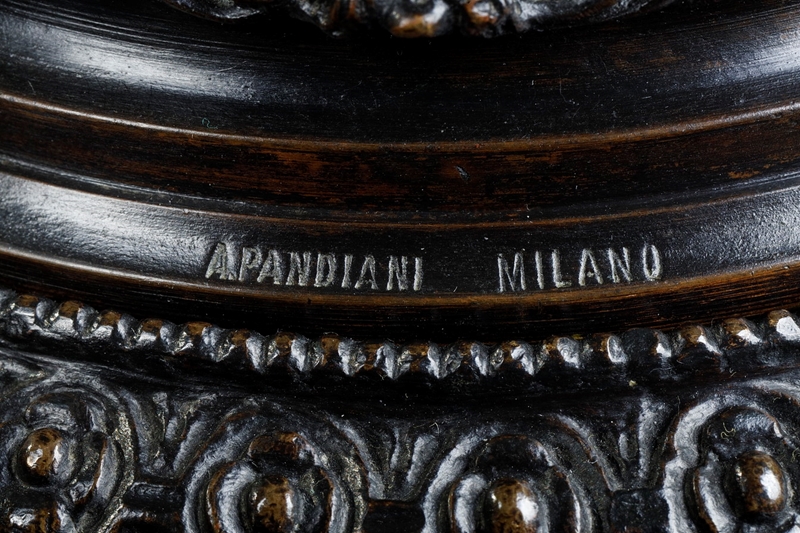
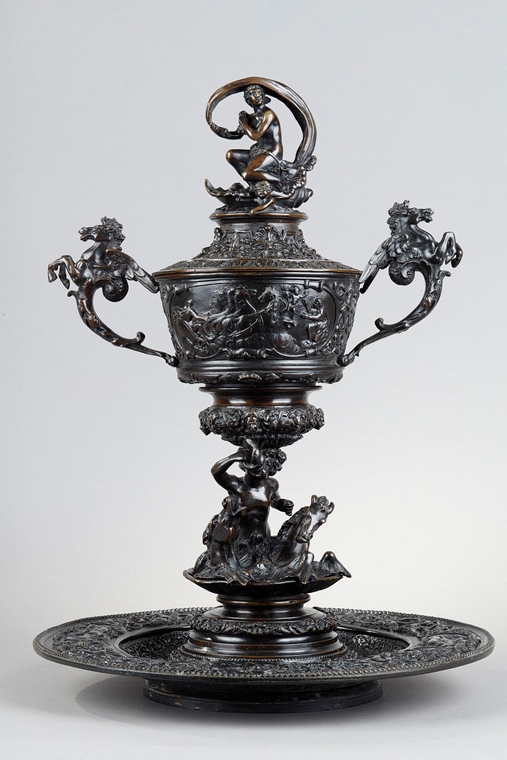
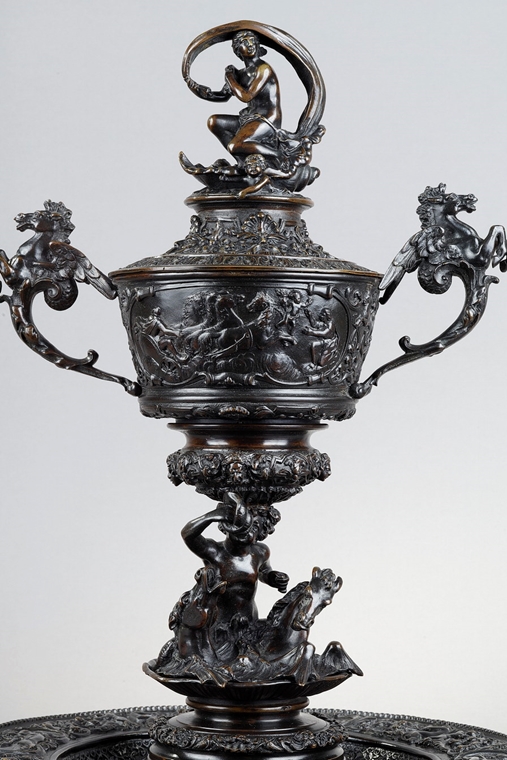
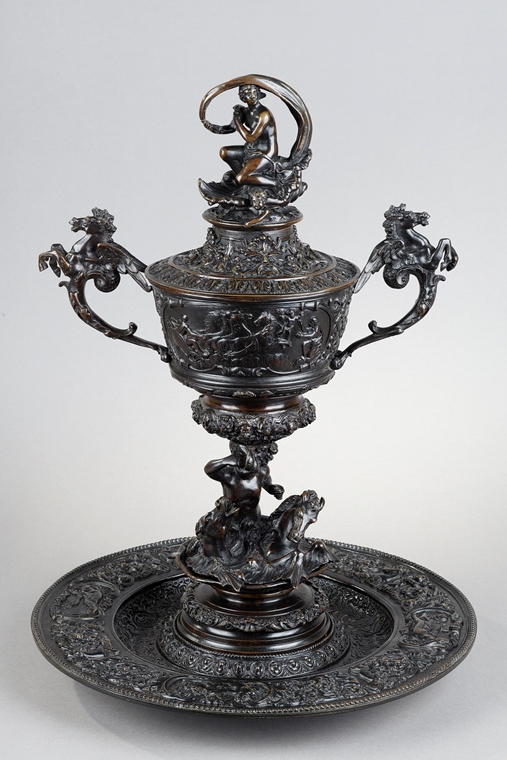
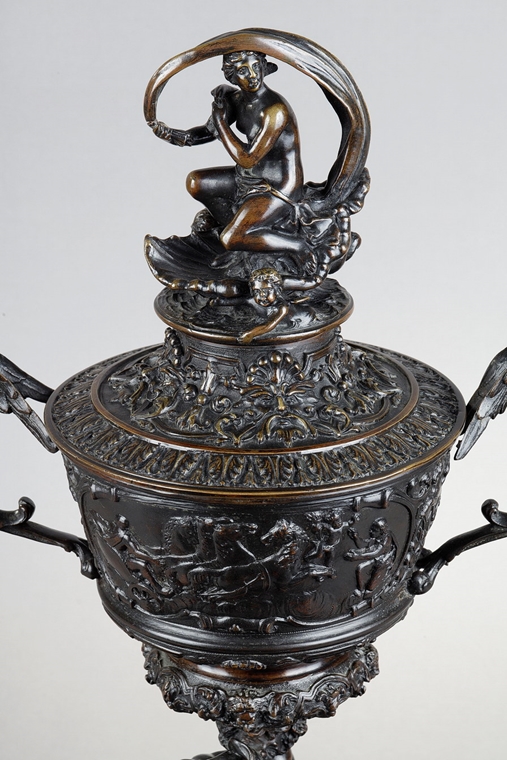
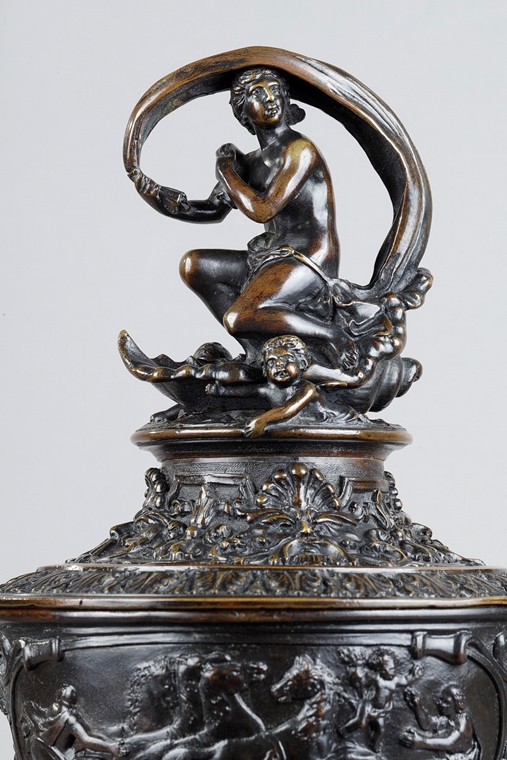
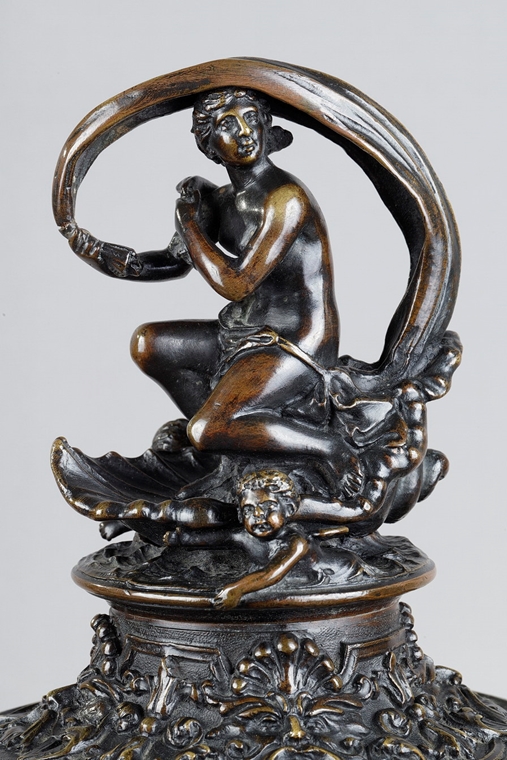
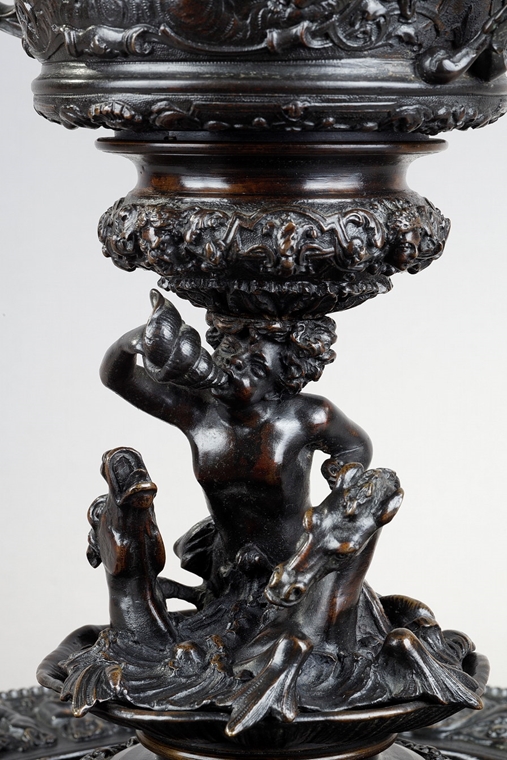

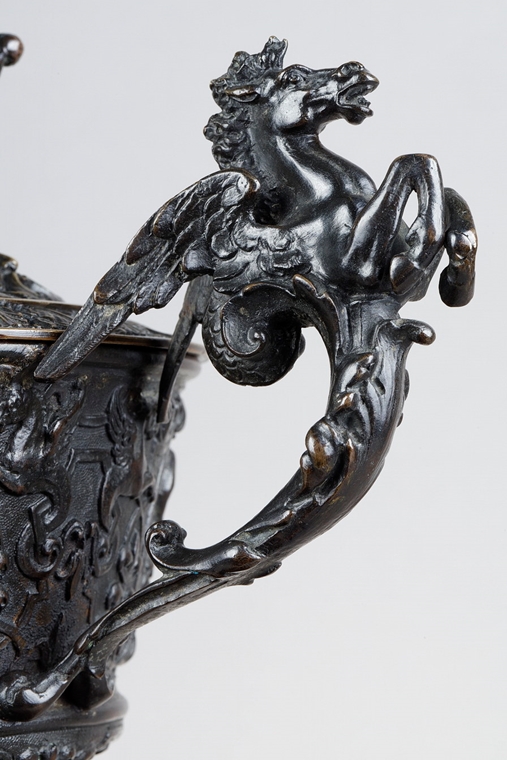
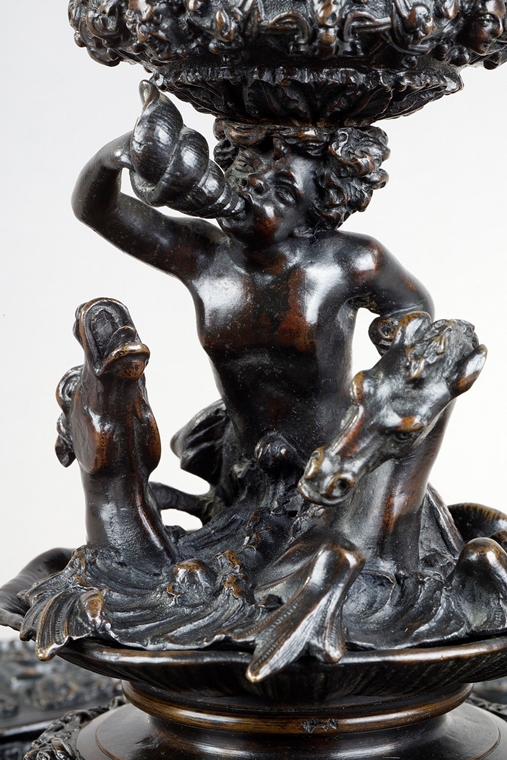

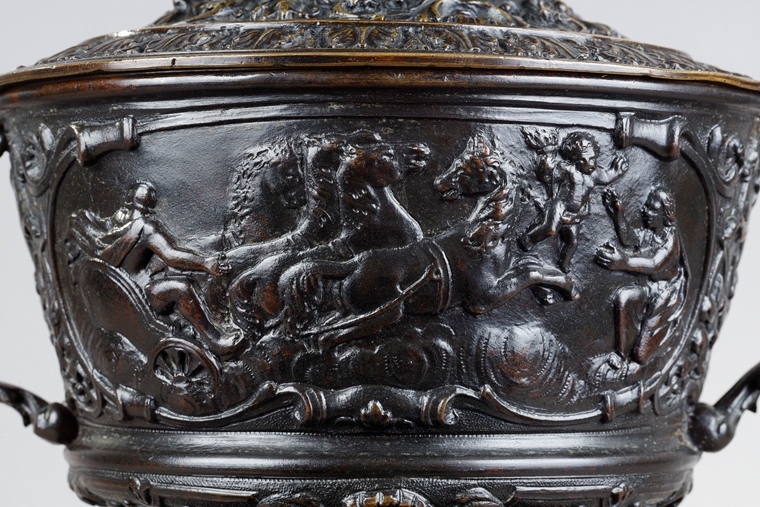
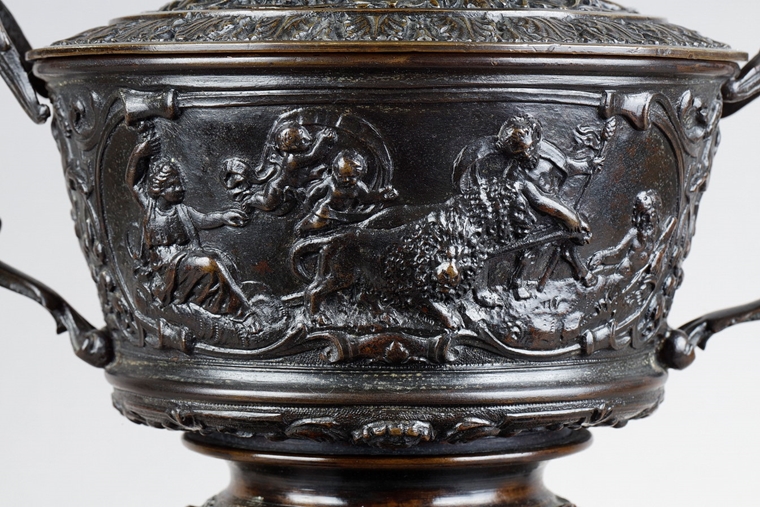
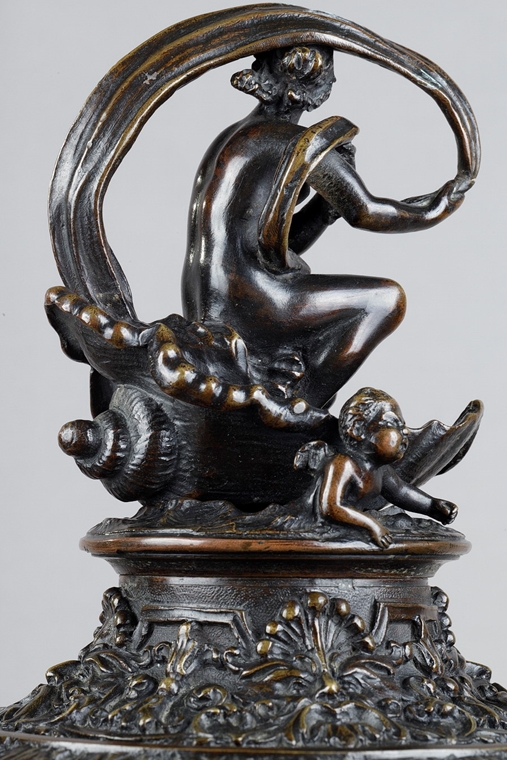
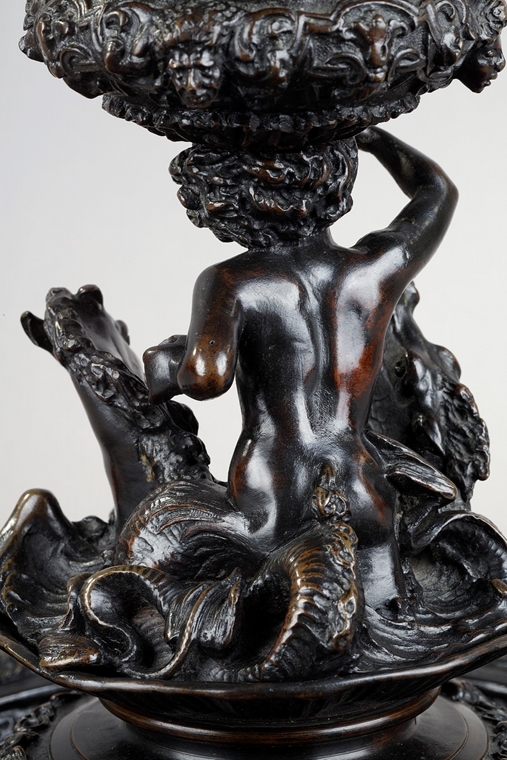
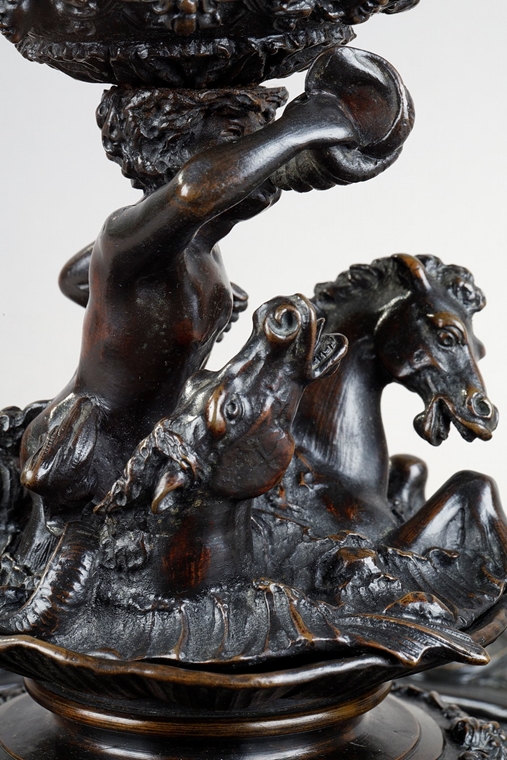
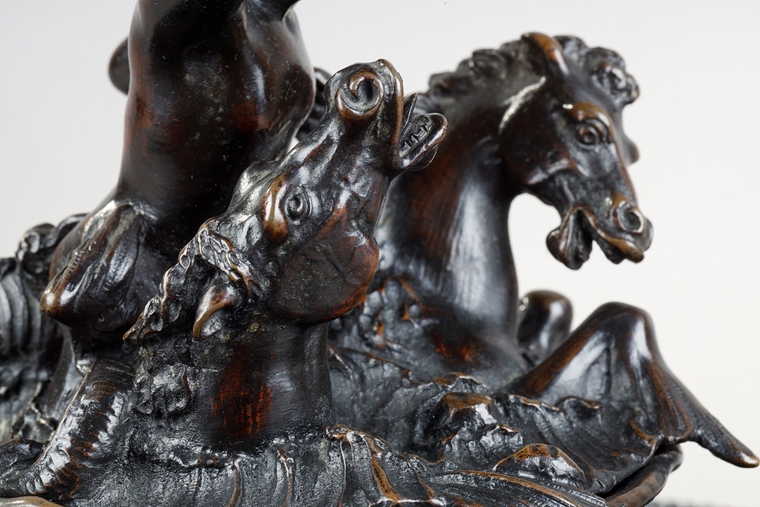

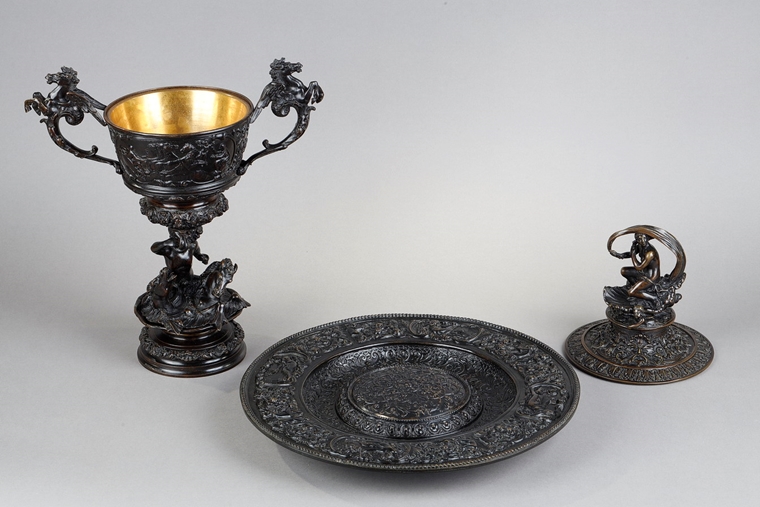
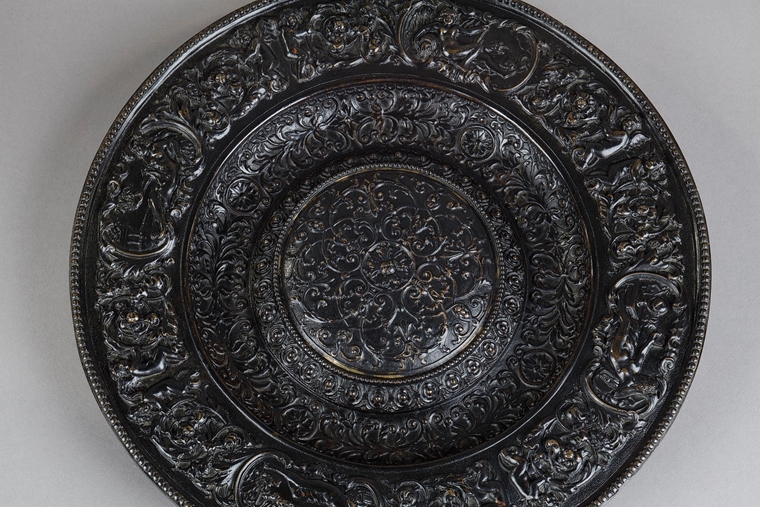
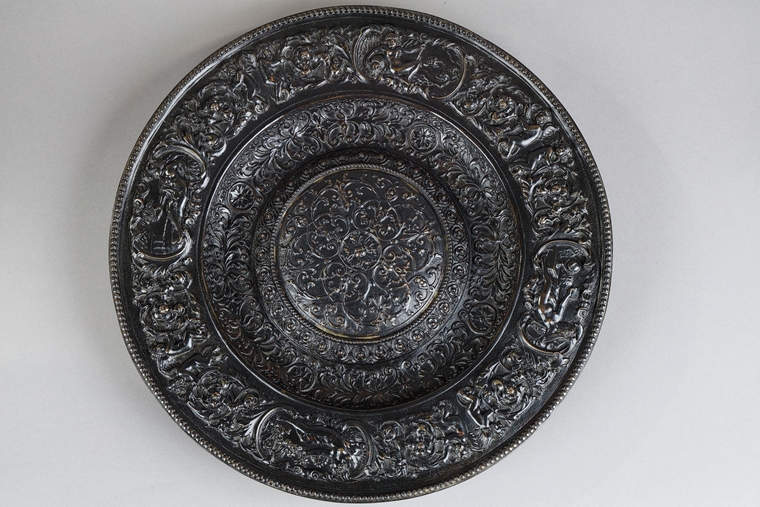
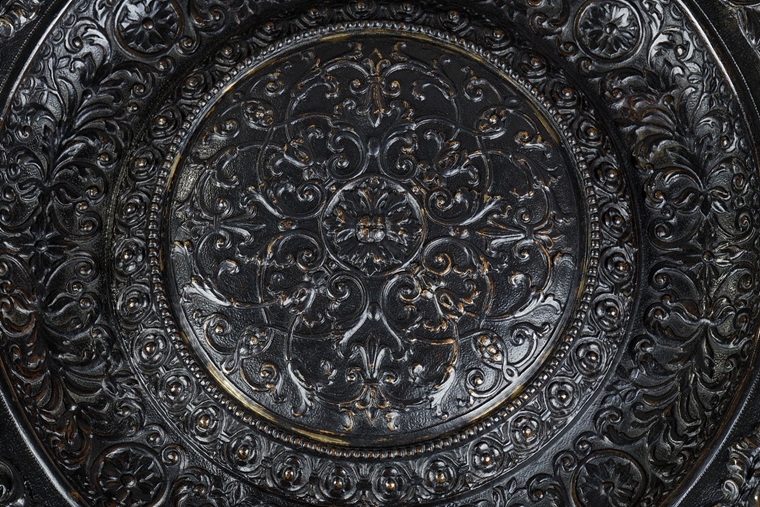
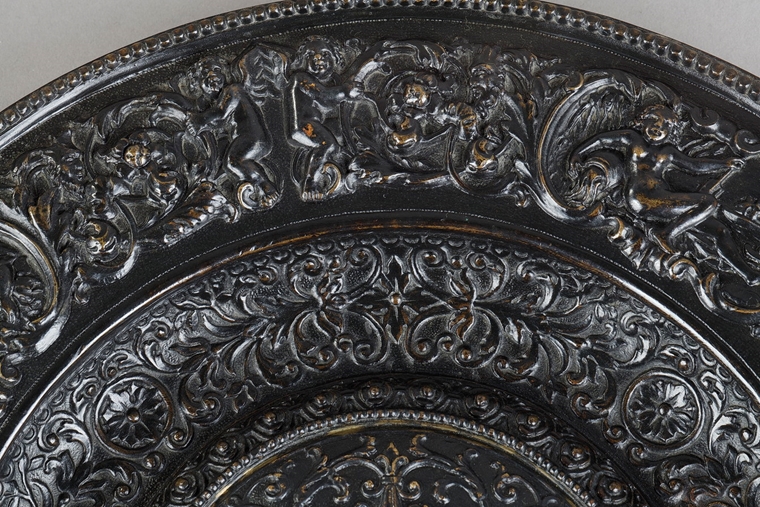
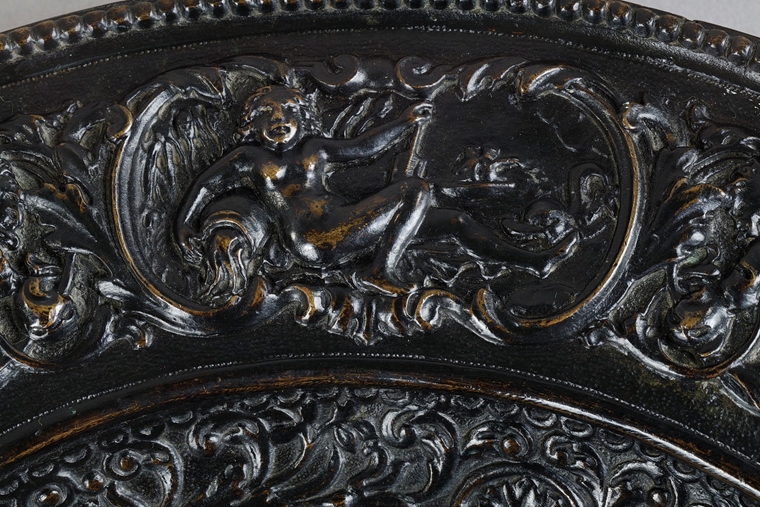
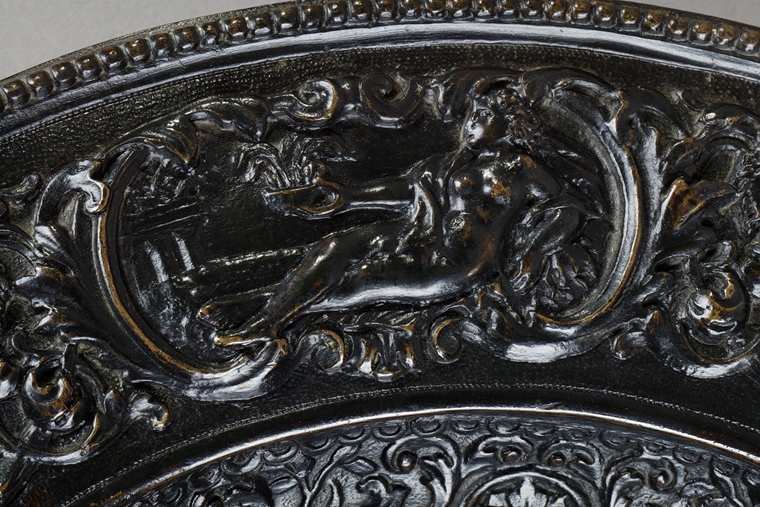
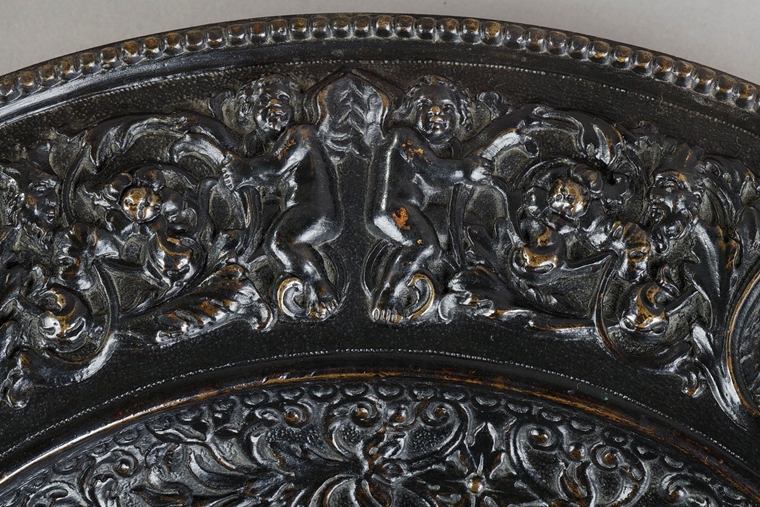
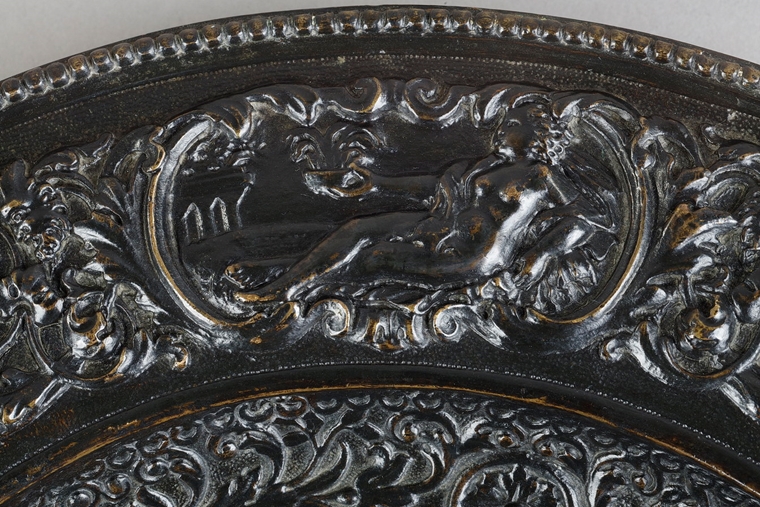
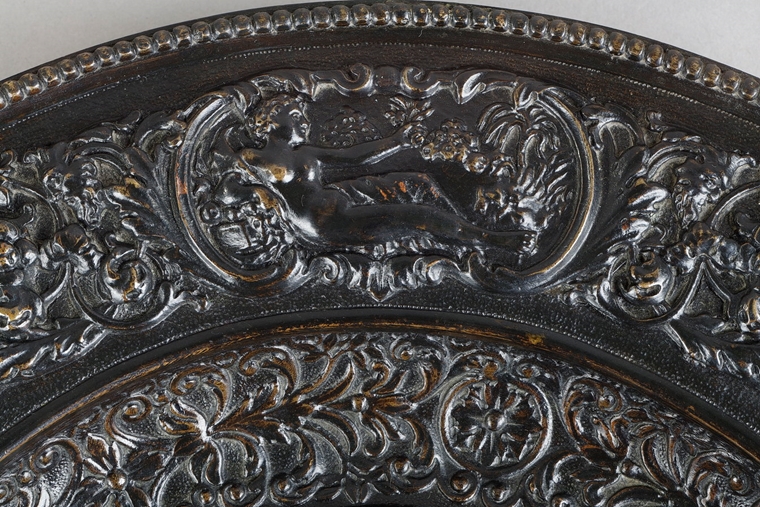
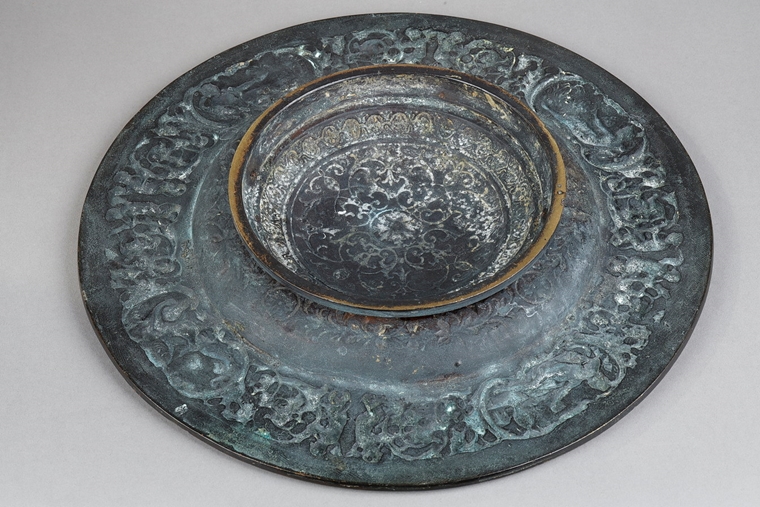
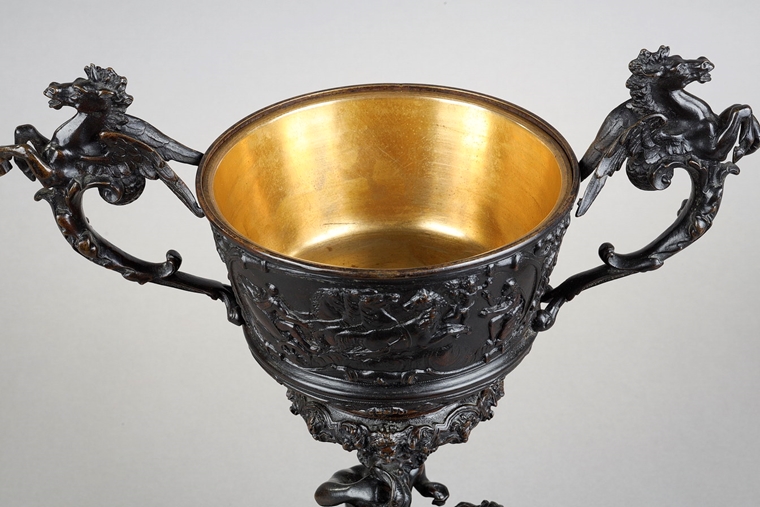
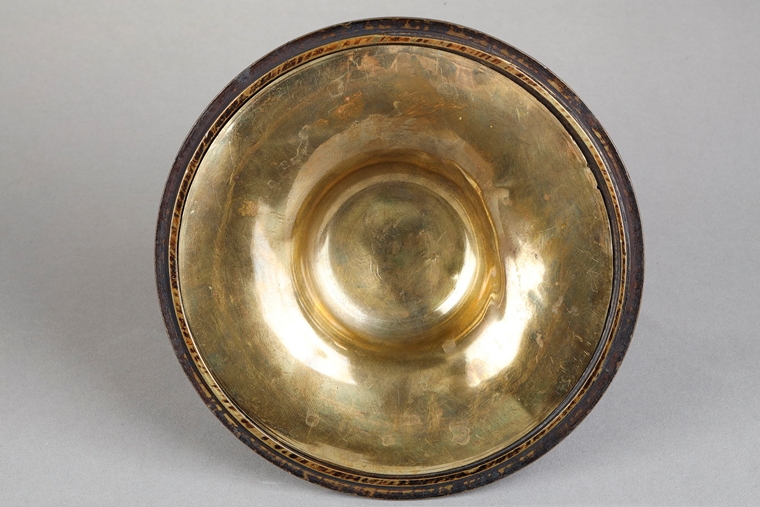
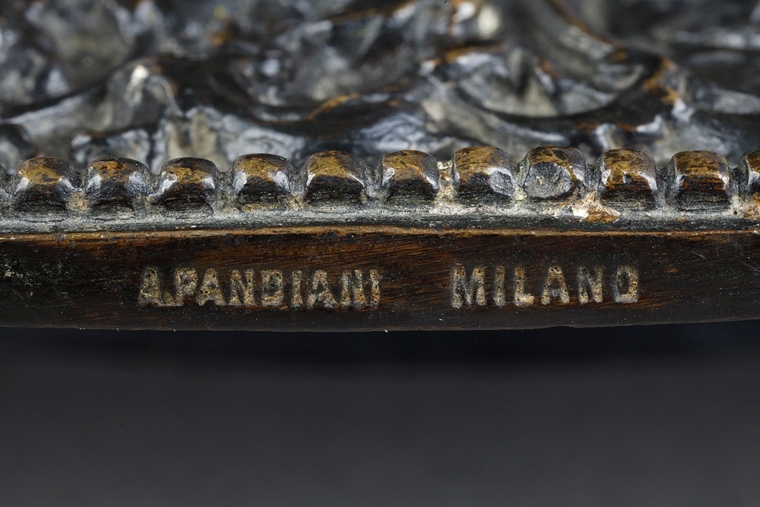
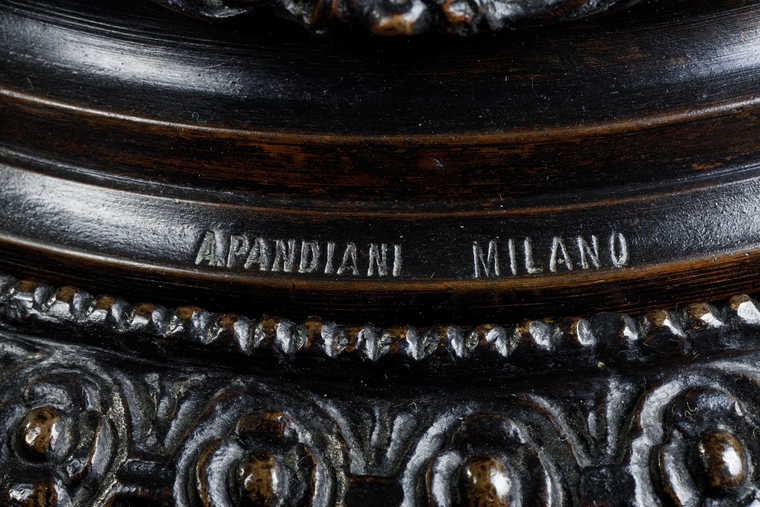
Ref: 8178
Renaissance bronze bowl by Antonio Pandiani Milano
€5500
Era: 19th century.
Materials: patinated bronze.
Dim: H 49 cm / W 35 cm.
Sign: A. Pandiani Milano.
Additional information
Pedestal bowl in the form of a triton emerging between two water horses and blowing into a conch with its lid surmounted by a Nereid, probably Thetis, seated on a conch, a veil in the wind. Two winged horses in a "rearing" posture form the handles. One side of the bowl is decorated with Cybele seated in her chariot drawn by two lions guided by a satyr holding the tyrse (an attribute of Dionysus). The other side is decorated with a man looking back and seeming to flee, seated on a chariot driven by four horses galloping on the waves. The ensemble rests on a multi-level plate decorated with grotesques in the taste of Roman antiquity, rediscovered during the Renaissance. Signed A. Pandiani Milano.
This ensemble refers to a legend recounted in the Illiad: Dionysus (son of Zeus and the mortal Semele) came of age and discovered the vine and its uses. Hera, jealous of this child born of an infidelity by her husband Zeus, struck him with madness. In this state, the god wandered through Egypt and Syria. Once free of his madness, he reached Thrace, where he was very poorly received by King Lycurgus, who ruled on the banks of the Strymon. Lycurgus tried to take the god prisoner, but was unsuccessful, for Dionysus fled to Thetis, the Nereid, who gave him refuge in the sea. In this vase, we find Cybele, his protector, the flight of Dionysus and the marine world of Thetis.
Antonio Pandiani (1838-1928) was a renowned Milanese sculptor. Together with his brother Costantino, he supported the Lombard neoclassical style, exhibiting on several occasions at exhibitions organised by the Brera Academy. Antonio soon became a sculpture teacher at the same school, and in 1886 he took charge of the foundry; from that date onwards, thanks to the fine artistic production supported by the artist and his family, he continued to design innovative subjects. An appreciated sculptor with a lively academic style, Pandiani was best known for his many portraits, such as the bronze bust of Alessandro Manzoni (now in the collections of the GAM in Milan, 1905) and that of Queen Victoria, signed and dated 1890 (Anglesey Abbey, The Fairhaven Collection, The National Trust). Often dedicated to reproducing historical monuments in miniature, such as the bronze copy of the Istrian stone wellhead in the Campo Santi Giovanni e Paolo in Venice, Pandiani executed the sculpture with Vittorio Emanuele II as the hunter.Alongside this more historicist production, we should recall the artist's fine work on finely decorated bronze bowls and vases, such as the specimens now preserved in the Museum of Toscanini's birthplace in Parma.



